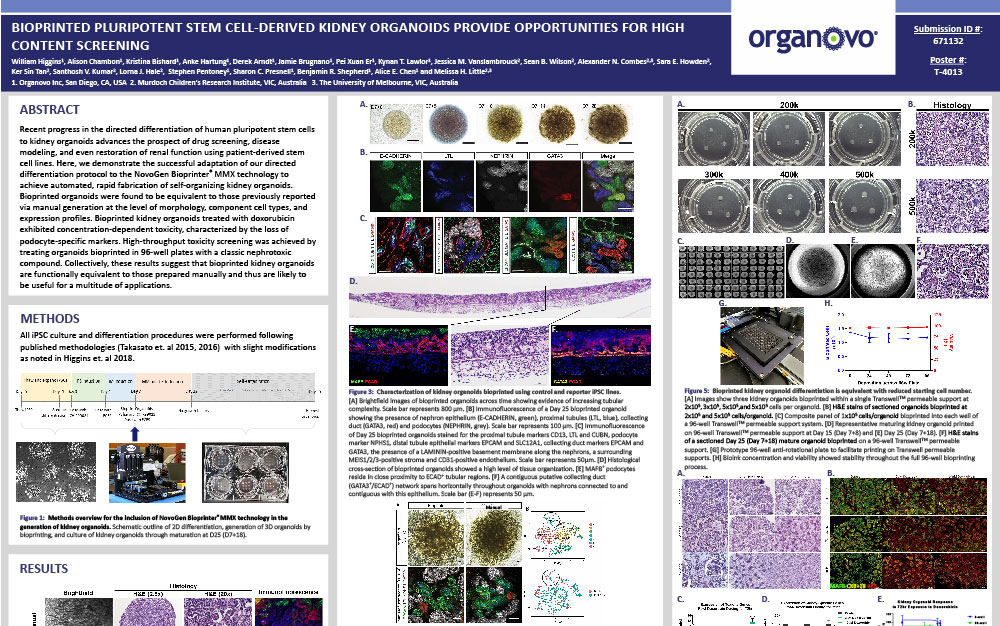Bioprinted pluripotent stem cell-derived kidney organoids provide opportunities for high content screening
Publication Summary:
Recent advances in the directed differentiation of human pluripotent stem cells to kidney organoids advances the prospect of drug screening, disease modelling, and even restoration of renal function using patient-derived stem cell lines. Here, we demonstrate the successful adaptation of our directed differentiation protocol to the NovoGen Bioprinter® MMX technology to achieve automated, rapid fabrication of self-organizing kidney organoids. Bioprinted organoids were found to be equivalent to those previously reported via manual generation at both the level of morphology and component cell types, as well as gene expression patterns and cell clusters revealed by single cell transcriptional profiling. Utilization of a bioprinter allows for the generation of large numbers of uniform and highly reproducible organoids in reduced time (approximately 20x faster) compared to manual processes. Treatment of bioprinted kidney organoids cultured in conventional 6-well format with doxorubicin exhibited concentration-dependent morphological changes consistent with cell injury and degeneration. Consistent with clinical observations, doxorubicin showed distinct glomerular toxicity with marked increases in cleaved caspase 3 mRNA and protein, accompanied by loss of podocyte-specific cell markers. Proof of concept high-throughput toxicity screening was achieved with bioprinted kidney organoids in 96-well Corning® Transwell® plates treated for 72 hours with a range of doxorubicin concentrations (0.2 to 25 µM). Analysis of 6-well and 96-well cell viability data suggested that organoids printed in both multi-well plate formats were similarly sensitive to doxorubicin. The doxorubicin IC50 for organoids bioprinted in 6-well plates was 3.9 ± 1.8 µM (value ± S.E.), while the calculated IC50 for organoids bioprinted in a 96-well plate was 3.1 ± 1.0 µM. Collectively, these results suggest that bioprinted kidney organoids are functionally equivalent to those prepared manually and thus are likely to be useful for toxicity screening, the development of iPSC-based approaches for the interrogation of complex disease phenotypes, and the scaling needed for clinical restoration of renal function with patient-derived iPSCs.
View Publication
